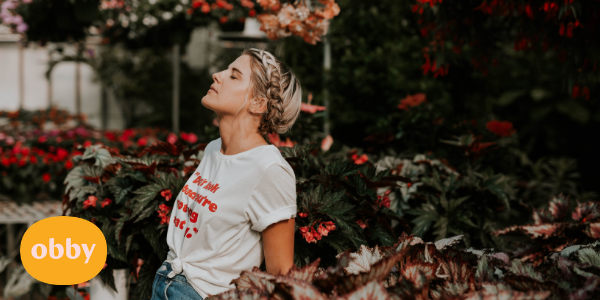
A relationship between floristry and the fashion industry has always been there. Flowers are natures clothes, they dress up the planet, the way clothes do people. They are everywhere in fashion offices, being sent as tokens of thanks or congratulations between media, designers, and models. They adorn offices, backstage at shows and even the catwalk. Flowers and fashion have a natural relationship, both being seasonal and loved for their appearance. Further back than that, natural dyes made from plants have been used in clothes production as far back as 2600 BC.
For many, flowers and fashion seem like an obvious match, mutually entwined, shall we say. They are both an aesthetic business and are loved simply for being so bloomin' beautiful. Much in the way that clothes can alter the appearance of a person, flowers alter their surroundings. Flowers bring luxury, freshness, glamour, and wholesomeness all at once. Flowers react to the personality of the venue or even the person they are dressing, much the way clothes look different on different people, flowers react very much the same way.
Their influence and involvement of flowers in the fashion world is as timeless, as it is seamless and natural. However, to the level that we see flowers used in the fashion industry today, especially in shows and catwalk, definitely began emerging in 2012. For Raf Simmon's debut Cristian Dior show, he commissioned florist Mark Colle to embed the walls of his chosen venue, the hôtel particulier with thick beds of flowers. Overnight, the 'flower wall', a much-loved Instagram trend, was born.
Social media and fashion moments can ignite 'horticultural trends', just like the flower wall. Floristry and fashion are also both trend-lead businesses. Although floristry may be inspired by fashion moments, like the flower wall, it has always had its own trends in arranging and blooms that naturally evolve as new creatives find themselves becoming influential in the floristry industry. Saipua and Nicolette Camille are both New York-based florists that are extremely influential in leading floristry trends, playing a part in inspiring the trend in seasonal, locally sourced flowers, meadow style flowers, and simple single stem arrangements.
Much in the way that clothes can alter the appearance of a person, flowers alter their surroundings. Flowers bring luxury, freshness, glamour, and wholesomeness all at once. Flowers react to the personality of the venue or even the person they are dressing, much the way clothes look different on different people, flowers react very much the same way.
The influence flowers have on huge fashion designers has never been a secret, Christian Louboutin once wrote, “I love plants. The garden allowed me to see colors, blends of colors and materials, juxtapositions of gloss and matte surfaces—it’s very instructive.” A huge fashion mogul who turns their nose up at flowers will be a hard press to find.
However, flowers have something that the fashion industry lacks. Flower produce a stunning smell, and although you can adorn models in perfume, the clothes themselves don't carry this sweet smell. The fragile scent that flowers give off influence another one of our major senses, our smell. This influences and increases our love for them in person that can't be done on social media, so although fashion can very much rely on social media, floristry businesses would be hiding away 50% of their products glory were they just to list online.
Although a lot of florists are now opening singularly online, there is still something alluring about attending floristry markets, with Brick Lane flower market in bustling east London, drawing hundreds of people each week to buy flowers from the distributors, regardless of its offensively-early-on-a-Sunday-morning timetable.
Both spurred on by social media, floristry, and fashion are two trends that we can expect to sit back and watch develop and will, as always, see a constant relationship between the two through time, regardless of the seasonal trends that affect the two of them separately and as a pair.

